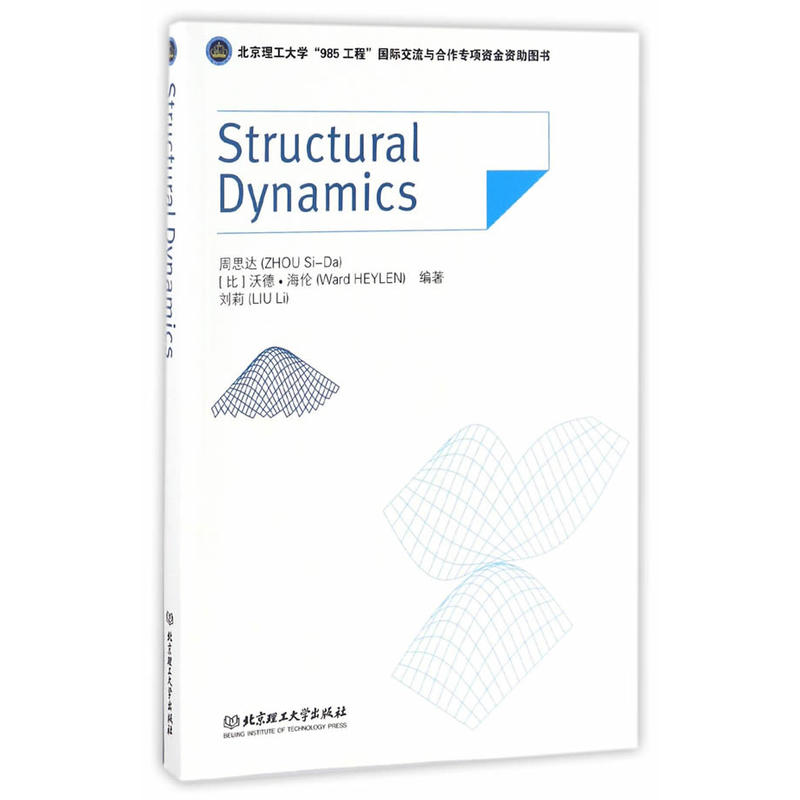- ISBN:9787568231008
- 装帧:一般胶版纸
- 册数:暂无
- 重量:暂无
- 开本:32开
- 页数:286
- 出版时间:2016-09-01
- 条形码:9787568231008 ; 978-7-5682-3100-8
本书特色
周思达、沃德·海伦、刘莉编*的《结构动力学 (英文版)》从工程结构的动力学设计与分析的需求入 手,阐述工程设计与分析中的结构动力学问题,结构 动力学的基本假设、任务、载荷类型、离散途径和建 模方法;介绍典型连续结构系统的动力学建模方法和 特殊边界与载荷条件下的解;重点介绍结构动力学的 时域分析方法,包括不同边界和载荷条件下单自由度 系统的特征分析方法和响应求解方法,以及多自由度 系统的响应数值求解方法与特征值问题,从而引出多 自由度系统的实模态分析;面向结构的动力学设计, 介绍结构动力学的频域方法,在复数域建立结构的传 递函数、频率响应函数,从而阐释结构的复频域分析 方法与模态参数;总结并介绍结构动力学的反问题之 一——实验模态分析。本书为全英文编写,面向研究 型大学研究生培养的国际化和工程领域的全球化需求 ,借助国外知名高校的经典参考书的成功经验和人员 基础,符合国际学术水平、国内实际需求,为相关教 学和工程研究提供良好的支持。
内容简介
《结构动力学(英文版)》从工程结构的动力学设计与分析的需求入手,阐述工程设计与分析中的结构动力学问题,结构动力学的基本假设、任务、载荷类型、离散途径和建模方法;介绍典型连续结构系统的动力学建模方法和特殊边界与载荷条件下的解;重点介绍结构动力学的时域分析方法,包括不同边界和载荷条件下单自由度系统的特征分析方法和响应求解方法,以及多自由度系统的响应数值求解方法与特征值问题,从而引出多自由度系统的实模态分析;面向结构的动力学设计,介绍结构动力学的频域方法,在复数域建立结构的传递函数、频率响应函数,从而阐释结构的复频域分析方法与模态参数;总结并介绍结构动力学的反问题之一——实验模态分析。《结构动力学(英文版)》为全英文编写,面向研究型大学研究生培养的国际化和工程领域的全球化需求,借助国外知名高校的经典参考书的成功经验和人员基础,符合国际学术水平、国内实际需求,为相关教学和工程研究提供良好的支持。
目录
-

思想道德与法治(2021年版)
¥6.8¥18.0 -

当代中国政府与政治(新编21世纪公共管理系列教材)
¥36.0¥48.0 -

毛泽东思想和中国特色社会主义理论体系概论(2021年版)
¥9.0¥25.0 -

落洼物语
¥9.4¥28.0 -

中医基础理论
¥51.7¥59.0 -

言语治疗学·全国中医药行业高等教育“十四五”规划教材
¥49.2¥56.0 -

习近平新时代中国特色社会主义思想概论
¥18.2¥26.0 -

艺术学概论
¥13.7¥37.4 -

粒子输运数值计算方法及其应用
¥42.8¥58.0 -

艺术学概论
¥60.2¥79.0 -

马克思主义基本原理2021年版
¥8.4¥23.0 -

智能控制
¥40.2¥56.0 -

社会学概论(第二版)
¥34.0¥55.0 -

法理学(第二版)
¥18.0¥50.0 -

全国中医药行业高等教育“十三五”规划教材中医养生学/马烈光/十三五规划
¥36.8¥55.0 -

基于python的从学习编程到解决问题
¥35.4¥53.8 -

新编大学生军事理论与训练教程
¥13.7¥39.8 -

马克思主义理论研究和建设工程重点教材:管理学(本科教材)
¥26.0¥48.0 -

世界现代史(1900-2000)
¥46.6¥80.0 -

水电站
¥24.4¥36.0













